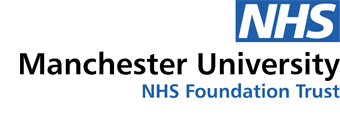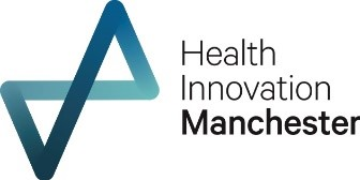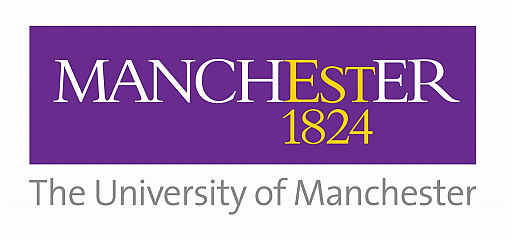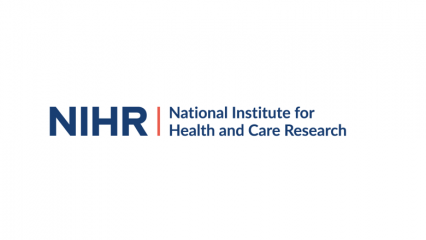Five blind patients with AMD will receive groundbreaking Argus II ‘bionic eye’ treatment
Second Sight Argus® II Retinal Prosthesis System to be trialled in blind dry AMD patients for the first time
Lausanne, Switzerland – September 15, 2014 – Second Sight Medical Products Inc. (Second Sight) today announces the world’s first ever study that aims to establish whether blind patients with total central vision loss due to dry Age-Related Macular Degeneration (AMD) can benefit from an artificial retina – the Argus® II Retinal Prosthesis System. Previously, this, and other retinal implants currently available, have been indicated only for use in patients with the rare disease Retinitis Pigmentosa.
It is hoped that the feasibility study will start in November. The study will be led by Paulo Stanga, Consultant Ophthalmologist & Vitreoretinal Surgeon at the Manchester Royal Eye Hospital and Professor of Ophthalmology and Retinal Regeneration at The University of Manchester.
Dry AMD is a much more common disease than Retinitis Pigmentosa (RP). Worldwide, an estimated 1.5 million people suffer from RP [1], compared to 20 to 25 million who have dry AMD [2].
According to the UK patient group The Macular Society, the dry form of AMD affects 44,000 more people per year in the UK [3].
Professor Stanga, who is also Director of the Manchester Vision Regeneration (MVR) Laboratory at the National Institute for Health Research (NIHR)/Wellcome Trust Manchester Clinical Research Facility says: “On behalf of the Manchester Royal Eye Hospital, we feel privileged to be conducting the world’s first study into retinal implants for patients with AMD. This technology is revolutionary and changes patients’ lives – restoring some functional vision and helping them to live more independently.
“The dry form of AMD is a common but untreatable condition – in the western world, it is the leading cause of sight loss. Unfortunately, with an ageing population, it is becoming more common. We believe that patients with dry AMD have a similar risk profile to patients with RP. We are initially limiting our study to the dry form of AMD, and if successful, perhaps we will subsequently look into recruiting patients with the advanced and scarred wet form of AMD.”
Gregoire Cosendai, VP of Europe for Second Sight Medical Products, says: “Back in 1992, Professor Mark Humayun, who co-developed the Argus System, used a retinal probe to stimulate the retinas of patients with both dry AMD and RP. Both type of patients were able to perceive light again.
“The difference between patients with dry AMD and patients with RP is that the AMD patients retain some peripheral vision. RP patients with severe disease have no peripheral vision. This is why we have focused on treating RP patients first. This study will aim to establish whether the retention of some peripheral vision in dry AMD patients with severe sight loss – functionally blind patients – can benefit from artificial vision in their central visual field as well as using their remaining peripheral natural vision. This is totally groundbreaking research.”
Chief Executive of the Macular Society, Tony Rucinski, says: “This is an important trial because, up until now, the artificial retina has not been thought suitable for people with AMD. We will be following the work closely. 200 people a day are diagnosed with AMD and an ageing society means that many more people are at risk in future. It is vital that we find new treatments and cures and this work may bring us a step closer to that.”
Second Sight gained European approval (CE Mark) for the Argus II system in 2011 and United States FDA approval in 2013. The Argus II system remains the first approved retinal prosthesis treatment in the world. The Argus II has now been implanted in over 90 patients. Several patients have been using the system for more than seven years, which shows the long-term reliability of the device. Argus II has been the subject of 20 peer-reviewed articles, including the most recent one, “The Argus II prosthesis facilitates reaching and grasping tasks: a case series” by Kotecha et al in BMC Ophthalmology 2014, 14:71.
The Argus II works by converting video images captured by a miniature camera housed in the patient’s glasses into a series of small electrical pulses that are transmitted wirelessly to electrodes on the surface of the retina. These pulses stimulate the retina’s remaining cells resulting in the corresponding perception of patterns of light in the brain. The patient then learns to interpret these visual patterns to regain some visual function.
Ends
About dry AMD
About dry Age related Macular Degeneration (AMD)
Dry AMD is more common than the ‘wet’ type. Dry AMD affects 85% of AMD patients. Dry AMD usually develops slowly and causes gradual loss of central vision, but doesn’t affect peripheral vision. There is currently no treatment for dry AMD.
About Retinitis Pigmentosa (RP)
RP is a rare, hereditary disease that causes a progressive degeneration of the light-sensitive cells of the retina, leading to significant visual impairment and ultimately blindness. There are an estimated 1.2 million people worldwide with RP. Second Sight’s Argus II System employs electrical stimulation to bypass the defunct cells and stimulate remaining viable retinal cells inducing visual perception in blind individuals. The Argus II is the first artificial retina to receive approval in Europe (CE Mark) and in the USA.
About the Argus® II System
The Argus II System is the second generation of retinal prosthesis developed by Second Sight. The Argus I system was launched in 2002. The system has been approved in Europe and in the US. It has been implanted into more than 90 patients worldwide. The system is reimbursed in Germany, Italy and in the US. It is available at 16 centres of excellence in Europe.
About Second Sight
Second Sight Medical Products, Inc., located in Los Angeles, California, was founded in 1998 to create a retinal prosthesis to provide sight to patients blinded from outer retinal degenerations such as RP. Through dedication and innovation, Second Sight’s mission is to develop, manufacture and market implantable visual prosthetics to enable blind individuals to achieve greater independence. US Headquarters are in Sylmar, California. European Headquarters are in Lausanne, Switzerland.
For more information, visit http://www.secondsight.com.
Central Manchester University Hospitals NHS Foundation Trust (CMFT) is a leading provider of specialist healthcare services in Manchester, treating more than a million patients every year. Its eight specialist hospitals (Manchester Royal Infirmary, Saint Mary’s Hospital, Royal Manchester Children’s Hospital, Manchester Royal Eye Hospital, University Dental Hospital of Manchester and Trafford Hospitals) are home to hundreds of world class clinicians and academic staff committed to finding patients the best care and treatments. (www.cmft.nhs.uk)
The University of Manchester, a member of the prestigious Russell Group of British universities, is the largest and most popular university in the UK. It has 20 academic schools and hundreds of specialist research groups undertaking pioneering multi-disciplinary teaching and research of worldwide significance. According to the results of the 2008 Research Assessment Exercise, The University of Manchester is one of the country’s major research institutions, rated third in the UK in terms of ‘research power’, and has had no fewer than 25 Nobel laureates either work or study there. The University had an annual income of £807 million in 2011/12. (www.manchester.ac.uk)
The NIHR/Wellcome Trust Manchester Clinical Research Facility (MCRF) is a purpose-built unit focused on supporting experimental medicine research helping to bring new drugs and medical devices into patient care. The facility is based at Central Manchester University Hospitals NHS Foundation Trust and receives funding from the National Institute for Health Research (NIHR). The MCRF offers state-of-the-art equipment and facilities for adult and children’s studies, and has a team of specialist research nurses and support staff. A satellite unit the Children’s CRF in the Royal Manchester Children’s Hospital is at the cutting edge of research into inherited renal, metabolic, and hearing disorders.
The National Institute for Health Research (NIHR) is funded by the Department of Health to improve the health and wealth of the nation through research. Since its establishment in April 2006, the NIHR has transformed research in the NHS. It has increased the volume of applied health research for the benefit of patients and the public, driven faster translation of basic science discoveries into tangible benefits for patients and the economy, and developed and supported the people who conduct and contribute to applied health research. The NIHR plays a key role in the Government’s strategy for economic growth, attracting investment by the life-sciences industries through its world-class infrastructure for health research. Together, the NIHR people, programmes, centres of excellence and systems represent the most integrated health research system in the world. For further information, visit the NIHR website (www.nihr.ac.uk).
[1] http://www.ncbi.nlm.nih.gov/pmc/articles/PMC39310/
[2] http://www.ncbi.nlm.nih.gov/pmc/articles/PMC1125371/
[3] http://www.macularsociety.org/research/Prevalence



